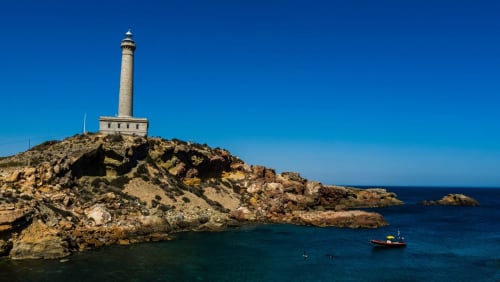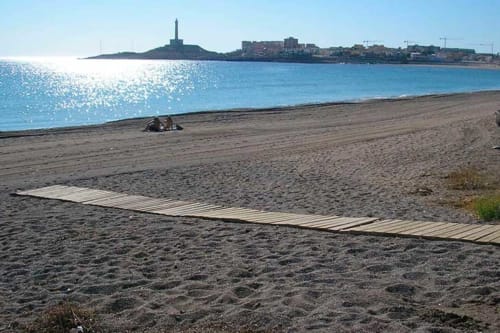Cabo de palos, murcia
Cabo de Palos is a privileged enclave in the Region of Murcia. Belonging to the municipality of Cartagena this coastal town stands out for its emblematic lighthouse
Its landscape is composed of small coves and cliffs that give it an unusual beauty. Its seabed is the delight of diving lovers, as they are part of the Marine Reserve of Cabo de Palos and Islas Hormigas.
An ideal destination for the family and lovers of nautical tourism, Cabo de Palos is one of the great jewels of the Region of Murcia.

Cliffs of Cabo de Palos
Cabo de Palos is a peninsula about 600 meters long of volcanic origin, oriented from east to west, which forms the westernmost part of the Baetic system that here sinks into the sea, giving rise to the sea shallows and nearby islands. The low, sandy coast, in its section of La Manga, becomes steep and rocky as it turns the cape, opening up into small coves, hollows and recesses created by erosion, harboring rich habitats of flora and fauna

Reona Cove
Urban beach. It is located in Cabo de Palos, peninsula of a width of 400 m. The marine bottoms that surround the environment form one of the most important reserves of the Mediterranean. It has bus stop, line Alsa: Cartagena-La Manga, and line Alsina Graells: Murcia-La Manga.
ENVIRONMENTAL ASPECTS
ENVIRONMENTAL ASPECTS

Levante Beach
The Levante beach joins La Manga with Cabo de Palos, being located at the foot of the lighthouse the small Cala Túnez, also called Cala Cuna. On the other side of the lighthouse is Cala Fría, from where a path starts, passing through the coves of Las Escaleritas, El Muerto, Botella and Las Melvas, and leads to the port of Cabo de Palos, from where the beach of La Barra starts, to continue along the coastline through the Medina and El Descargador coves, which precede Cala Flores and Cala Reona, where the coast of the Calblanque Regional Park begins

Diving Cabo de Palos and Islas Hormigas (Marine Reserve)
Cabo de Palos is located in a privileged enclave open to the sea. A place of passage for multiple marine species where you will want to stay as long as it takes. The Marine Reserve of Cabo de Palos - Islas Hormigas is the most important, best known and most visited by both national and international divers, since, in addition to the great fauna and large meadow of posidonia it has, it offers numerous historic sunken wrecks.